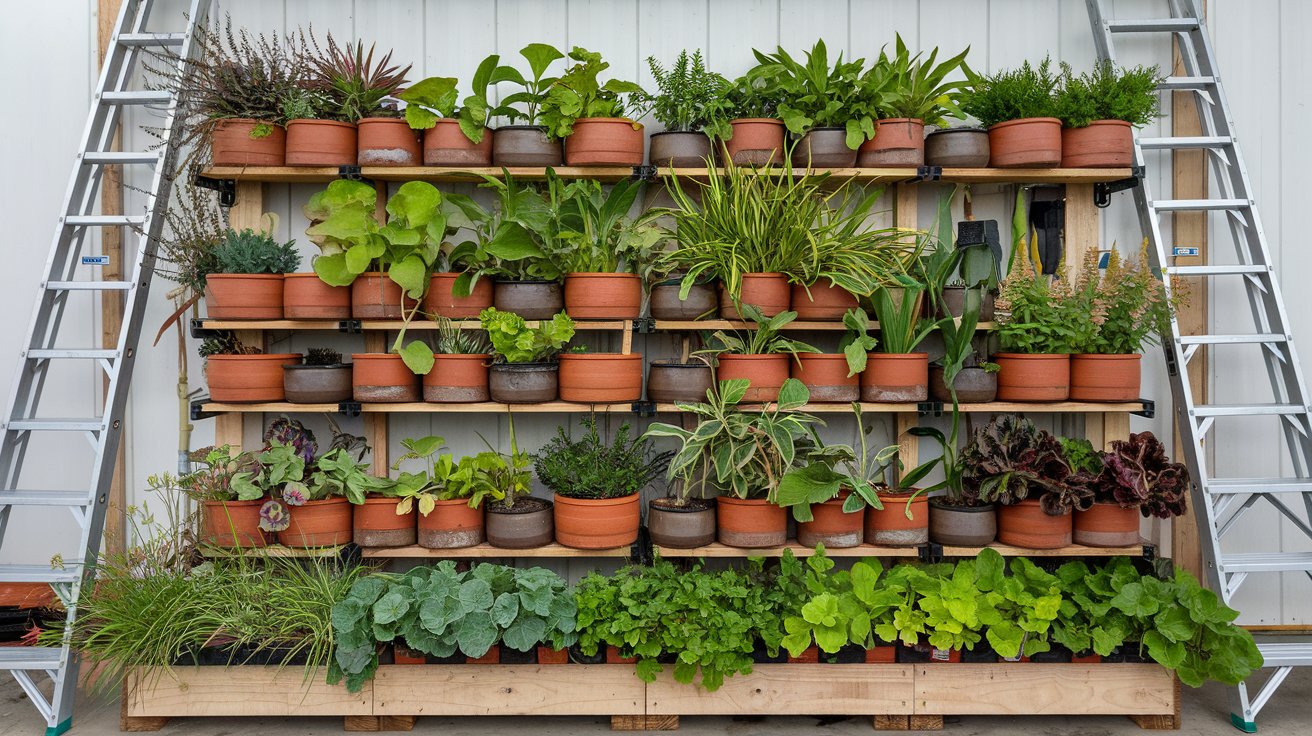Mites on indoor plants are tiny, often invisible creatures that can cause significant damage to your plants if left untreated. While they might be difficult to detect at first, their effects are unmistakable — causing yellowing leaves, stunted growth, and even plant death. If you have noticed small specks or webbing on your plants, you may be dealing with an infestation of spider mites, russet mites, or another type of plant-damaging mite.
In this guide, we will cover everything you need to know about mites on indoor plants: how to spot them early, natural remedies you can use, and methods for preventing future infestations. Whether you’re a beginner or an experienced plant owner, you’ll find actionable advice to help your plants thrive in a mite-free environment.
Key Takeaways
Table of Contents
What Are Mites and Why Are They a Problem for Indoor Plants?
Mites are arachnids (related to spiders), not insects, and they thrive by feeding on the sap of plants. Although there are various types of mites, the most common ones that infest indoor plants are spider mites, broad mites, and russet mites. These pests are so small that they are often difficult to see with the naked eye.
When mites invade your indoor plants, they pierce the plant’s cells to feed on the sap, which leads to a range of problems:
In extreme cases, a mite infestation can lead to the death of your plant if not treated quickly.
How to Identify Mites on Indoor Plants
Detecting mites early is crucial to minimizing damage. However, these pests are small, and their symptoms can sometimes be mistaken for other issues like nutrient deficiencies or environmental stress. Here’s how to identify mites on your indoor plants:
If you’re unsure whether mites are the cause, try using a magnifying glass to get a closer look at the plant’s leaves. If you see small, moving dots, it’s likely mites.

Close-up of spider mites on a leaf.
Common Types of Mites Found on Indoor Plants
There are various types of mites that can infest indoor plants, each with slightly different behaviors and symptoms:
Understanding the specific type of mite infesting your plant can help in choosing the right treatment and control method.

Comparison of spider mites, russet mites, and broad mites.
What Causes Mites on Indoor Plants?
Mites thrive in specific conditions, and understanding the causes of infestations can help you prevent them. Here are some of the main reasons why mites target indoor plants:
By controlling environmental factors such as humidity and airflow, and practicing good plant quarantine practices, you can reduce the likelihood of mite infestations in your home.

Indoor plant with visible dust and poor lighting.
How to Prevent Mites on Indoor Plants
Preventing mites from taking hold of your indoor plants is much easier than dealing with an infestation after the fact. Here are some key tips to keep your plants safe from mites:
By creating a less favorable environment for mites and using natural deterrents, you can significantly reduce the risk of an infestation.

Indoor garden setup with proper humidity and spacing.
How to Treat Mites on Indoor Plants Quickly
If you discover mites on your indoor plants, it’s essential to act fast to prevent further damage. Here’s a step-by-step guide on how to treat mites effectively:
By following these steps, you can effectively stop the mites from causing further damage and prevent the problem from getting worse.

Applying neem oil to a plant for mite control.
Natural and Eco-Friendly Remedies for Mites
For eco-conscious plant owners, there are several natural remedies to treat mites without resorting to harsh chemicals. Here are some effective options:
These eco-friendly remedies are not only effective but also safe for you, your plants, and the environment.
Comparison of Natural vs. Chemical Treatments for Mites
Treatment | Pros | Cons |
|---|---|---|
Neem Oil | Natural, safe, eco-friendly | May need frequent application |
Insecticidal Soap | Easy to use, effective | May not kill all mites on the first try |
Diatomaceous Earth | Safe, non-toxic | Needs to be reapplied after watering |
Chemical Treatments for Mites: What You Should Know
While natural remedies are effective for most mild infestations, sometimes a more aggressive approach is necessary. Chemical miticides can be highly effective, but they also come with some risks:
Chemical treatments should be a last resort when other methods have failed, as they can have long-lasting effects on your indoor environment.

A bottle of miticide and an infested plant.
When to Repot Your Plant After a Mite Infestation
If you’ve had a severe mite infestation, it may be necessary to repot your plant to fully eradicate the problem. Here’s when and how to do it:
Repotting ensures that you’re starting fresh, with a healthy growing environment for your plant.

Repotting a plant after a mite infestation.
Conclusion: Stop Mites Before They Stop Your Plants
Mites on indoor plants can be a significant threat, but with proper identification and fast action, you can stop them before they cause irreversible damage. Whether you choose natural treatments or, in extreme cases, chemical options, it’s crucial to stay vigilant and act quickly.
By maintaining good plant care practices, checking for pests regularly, and taking preventive measures, you can protect your plants from future mite infestations and ensure they remain healthy and vibrant for years to come.
Frequently Asked Questions
How do I get rid of mites on my houseplants?
Use natural remedies like neem oil or insecticidal soap to treat your plants. You may also need to remove affected leaves and improve humidity.
What can I spray on my plants to get rid of mites?
You can spray neem oil, insecticidal soap, or a mixture of rubbing alcohol and water to control mites.
What do mites look like on a houseplant?
Mites appear as tiny, moving specks on leaves, often accompanied by yellowing, webbing, and curled leaves.
What causes spider mites on indoor plants?
Spider mites thrive in dry, dusty conditions and poor airflow. Keeping your plants in a humid, well-ventilated space can help prevent infestations.
Are mites dangerous to houseplants?
Yes, mites can cause significant damage to plants by feeding on sap, leading to yellowing, stunted growth, and even death if untreated.
How do I prevent mites on indoor plants?
Keep humidity levels high, regularly clean your plants, and avoid overcrowding. Isolate new plants for a few weeks to prevent infestations.

Robert Martin is a passionate blogger and versatile content creator exploring the intersections of personal finance, technology, lifestyle, and culture. With a strong background in financial literacy and entrepreneurship, he helps readers make smarter money moves, build sustainable side hustles, and achieve financial independence.
Beyond finance, Robert shares his insights on home decor and gardening—offering practical ideas for creating beautiful, functional living spaces that inspire comfort and creativity. He also dives into the dynamic worlds of sports and celebrity news, blending entertainment with thoughtful commentary on trends that shape today’s pop culture.
From decoding the latest fintech innovations to spotlighting everyday success stories, Robert delivers content that’s informative, relatable, and actionable. His mission is to empower readers to live well-rounded, financially confident lives while staying inspired, informed, and ahead of the curve.




